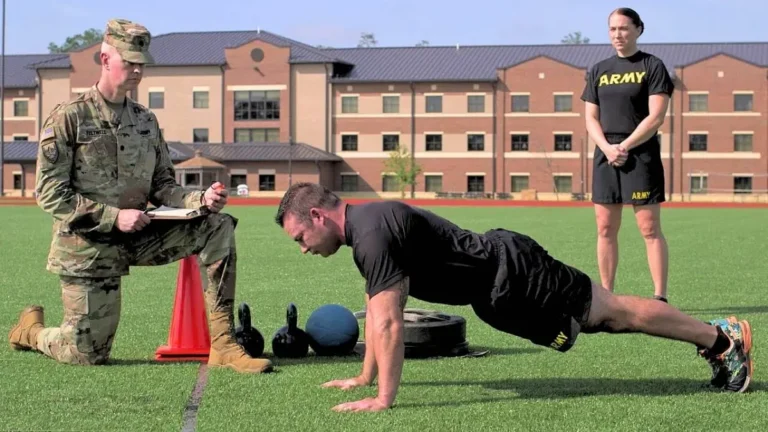Losing Weight After 60: Healthy Diet and Exercise Tips for Seniors

Stepping on the scale after 60 can feel disheartening when the numbers refuse to budge despite your best efforts. Your metabolism has slowed down, medications might be working against you, and those exercise routines that worked in your 40s now leave you exhausted or injured.
Many seniors believe weight loss becomes impossible with age, leading to frustration and giving up entirely. The truth is, your body simply needs a different approach now. Smart nutrition choices, age-appropriate exercises, and understanding how your changing physiology works can help you shed those stubborn pounds safely. The strategies ahead will show you exactly how to work with your body’s natural changes, not against them, to achieve lasting weight loss while protecting your health and maintaining your independence.
1. Understanding Metabolism Changes After 60
Your body’s metabolism naturally slows down as you age, making weight loss more challenging but not impossible. After 60, muscle mass decreases by about 3-8% per decade, which directly impacts how many calories you burn at rest. Hormonal changes, particularly in women after menopause, can shift fat storage to the midsection. Thyroid function may also decline, further reducing metabolic rate.

However, strength training and proper nutrition can counteract many of these changes. Regular physical activity becomes even more crucial for maintaining a healthy weight. Small dietary adjustments can make significant differences when combined with consistent exercise routines.
- How to perform: Track your daily calorie intake for one week using a food diary or smartphone app to understand your current eating patterns
- Boost metabolism naturally: Eat protein with every meal, drink green tea, stay hydrated with 8-10 glasses of water daily, and include spicy foods like cayenne pepper
- Combat muscle loss: Incorporate resistance exercises twice weekly, consume 25-30 grams of protein per meal, and prioritize sleep for muscle recovery
2. Creating a Balanced Senior-Friendly Diet
Nutritional needs shift after 60, requiring fewer calories but more nutrient-dense foods. Focus on lean proteins like fish, chicken, beans, and eggs to preserve muscle mass during weight loss. Calcium and vitamin D become increasingly important for bone health. Fiber-rich vegetables and fruits help with digestion and provide essential vitamins while keeping you feeling full.
Whole grains offer sustained energy without blood sugar spikes. Healthy fats from nuts, olive oil, and avocados support brain function and hormone production. Portion control becomes more important than strict food elimination.
- How to perform: Fill half your plate with colorful vegetables, one quarter with lean protein, and one quarter with whole grains at each meal
- Optimize nutrient absorption: Take vitamin B12 supplements as recommended by your doctor, eat vitamin C foods with iron-rich meals, and consume calcium sources away from high-fiber foods
- Smart swaps for seniors: Replace white rice with quinoa, use Greek yogurt instead of sour cream, choose baked sweet potato over regular fries
3. Safe Exercise Guidelines for Seniors
Exercise remains one of the most effective tools for weight loss after 60, but safety becomes paramount. Start slowly and gradually increase intensity to avoid injury. Low-impact activities like swimming, walking, and cycling are easier on joints while still burning calories effectively.
Strength training helps maintain bone density and muscle mass. Balance exercises reduce fall risk, which becomes more concerning with age. Always warm up before exercising and cool down afterward. Listen to your body and rest when needed.
- How to perform: Begin with 10-15 minutes of gentle movement daily, then add 5 minutes each week until reaching 30 minutes of moderate activity
- Joint-friendly modifications: Use resistance bands instead of heavy weights, try water aerobics for cardio, and choose yoga or tai chi for flexibility and balance
- Safety precautions: Exercise with a buddy when possible, wear proper footwear with good support, and keep a phone nearby during workouts
4. Building Muscle Mass Through Strength Training
Muscle tissue burns more calories than fat tissue, making strength training essential for weight loss after 60. You don’t need heavy weights to see results. Resistance bands, light dumbbells, and bodyweight exercises can effectively build and maintain muscle. Focus on major muscle groups including legs, arms, back, and core.

Consistency matters more than intensity at this stage of life. Allow at least one day of rest between strength training sessions for proper recovery. Progressive overload means gradually increasing difficulty as you get stronger.
- How to perform: Start with bodyweight exercises like wall push-ups, chair squats, and modified planks, performing 8-12 repetitions for 2-3 sets
- Equipment alternatives: Use soup cans as weights, try resistance bands for variable tension, or invest in adjustable dumbbells for home workouts
- Muscle-building nutrition: Eat protein within 30 minutes after strength training, include leucine-rich foods like eggs and fish, and spread protein intake throughout the day
5. Managing Medications and Health Conditions
Many seniors take medications that can affect weight loss efforts, including blood pressure medications, antidepressants, and diabetes drugs. Some medications may slow metabolism or increase appetite. Always consult your healthcare provider before starting any weight loss program.

Certain health conditions like arthritis, diabetes, or heart disease require modified approaches to diet and exercise. Blood sugar monitoring becomes crucial if you have diabetes and are changing eating patterns. Regular check-ups help track progress and adjust medications as needed.
- How to perform: Schedule a comprehensive health assessment with your doctor before beginning any weight loss plan, discussing current medications and health concerns
- Medication considerations: Never stop taking prescribed medications without medical supervision, ask about timing meals with medications, and report any unusual symptoms during weight loss
- Condition-specific strategies: Monitor blood pressure if hypertensive, check blood sugar more frequently with diabetes, and choose low-impact exercises for arthritis management
6. Staying Hydrated and Managing Appetite
Water intake becomes increasingly important after 60, as your body’s thirst signals weaken with age. Proper hydration supports metabolism and helps distinguish between hunger and thirst, which many seniors confuse. Dehydration can slow down fat burning and make you feel tired, leading to poor food choices.

Sometimes what feels like hunger is actually your body asking for fluids. Drinking water before meals can help with portion control and weight management. Herbal teas and broths count toward your daily fluid intake. Avoid sugary drinks that add empty calories to your diet.
- How to perform: Drink one glass of water upon waking, then sip water consistently throughout the day rather than waiting until you feel thirsty
- Appetite control strategies: Consume a full glass of water 20 minutes before each meal, eat water-rich foods like cucumbers and watermelon, and flavor water with lemon or mint for variety
- Hydration monitoring: Check your urine color (pale yellow indicates good hydration), weigh yourself before and after exercise to gauge fluid loss, and increase intake during hot weather or illness
7. Getting Quality Sleep for Weight Management
Sleep quality often declines after 60, but adequate rest remains crucial for successful weight loss. Poor sleep disrupts hormones that control hunger and satiety, making you crave high-calorie foods. Your body produces more cortisol when sleep-deprived, which promotes fat storage around the midsection.

Growth hormone, released during deep sleep, helps maintain muscle mass and burn fat. Lack of sleep also reduces your motivation to exercise and make healthy food choices. Establishing a consistent sleep schedule supports your weight loss goals. Most seniors need 7-8 hours of quality sleep per night.
- How to perform: Go to bed and wake up at the same time every day, even on weekends, to regulate your internal clock
- Sleep environment optimization: Keep your bedroom cool (65-68°F), invest in blackout curtains or an eye mask, and remove electronic devices at least one hour before bedtime
- Pre-sleep routine: Take a warm bath to lower body temperature, practice gentle stretching or meditation, and avoid caffeine after 2 PM
8. Social Support and Accountability
Weight loss journeys become more successful when you have others cheering you on. Family members, friends, or support groups provide motivation during challenging times. Cooking and exercising with others makes healthy habits more enjoyable and sustainable.

Social connections also reduce stress, which can contribute to emotional eating. Consider joining senior fitness classes or walking groups in your community. Online communities offer support when in-person options aren’t available. Sharing your goals with others creates natural accountability.
- How to perform: Tell three trusted friends or family members about your weight loss goals and ask them to check in with you weekly
- Building your support network: Join local senior centers with fitness programs, find walking partners in your neighborhood, or participate in healthy cooking classes
- Accountability tools: Use fitness apps that connect you with friends, schedule regular check-ins with a workout buddy, and celebrate small victories together
9. Tracking Progress and Staying Motivated
Weight loss after 60 happens more slowly than in younger years, making progress tracking essential for staying motivated. The scale doesn’t tell the whole story, especially when building muscle through strength training. Take body measurements, photos, and note improvements in energy levels and mobility.

Celebrate non-scale victories like climbing stairs easier or sleeping better. Keep a food and exercise journal to identify patterns and areas for improvement. Set realistic, short-term goals rather than focusing only on total weight loss. Expect plateaus and view them as normal parts of the process.
- How to perform: Weigh yourself weekly at the same time of day, preferably first thing in the morning after using the bathroom
- Alternative progress measures: Take waist, hip, and arm measurements monthly, note improvements in strength or endurance, and track how clothes fit rather than just scale weight
- Motivation boosters: Create a visual progress chart or photo timeline, reward yourself with non-food treats like new workout clothes, and write down three things you’re grateful for in your health journey each day
9 General Tips:
- Track your daily calorie intake to understand your changing metabolic needs after 60.
- Fill half your plate with colorful vegetables and lean proteins at every meal.
- Start with 10-15 minutes of low-impact exercise daily and gradually increase duration.
- Include strength training twice weekly using bodyweight exercises or light weights.
- Consult your doctor before starting any weight loss program to review medications.
- Drink water before meals to control appetite and stay properly hydrated.
- Maintain a consistent sleep schedule of 7-8 hours nightly for hormone balance.
- Build a support network through friends, family, or senior fitness groups.
- Track progress through measurements and energy levels, not just scale weight.
Final Thought:
Weight loss after 60 isn’t about turning back the clock or competing with your younger self. Your body has earned every year of wisdom, and now it deserves a approach that honors both your experience and your goals. The strategies you’ve learned here work because they respect your body’s natural changes while gently coaxing it toward better health.
Small, consistent actions compound into remarkable transformations over time. Your journey may look different from others, but it’s uniquely yours to own. Start tomorrow with just one tip from this guide, and let your future self thank you for taking that first step today.






